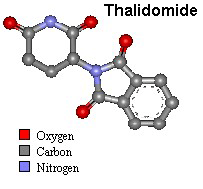So far, we have studied the basics concerning the drug discovery process.
We have seen how these discoveries were made, at the beginning, by serendipity to give way later to the methodogical method: the target-based approach.
We still do not know how the new drugs will be discovered in the future, but biologics, genetics and phenotypic[1] screening in drug discovery will increasingly play a critical role.

We have seen how these discoveries were made, at the beginning, by serendipity to give way later to the methodogical method: the target-based approach.
We still do not know how the new drugs will be discovered in the future, but biologics, genetics and phenotypic[1] screening in drug discovery will increasingly play a critical role.
There is another area of increasing interest within the drug development pipeline that, although it does not belong to the discovery process, should be remarked upon. It is usually named drug repurposing, and it is based on giving a known compound a new use.
This practice consists of choosing a compound from the catalogue of shelved drugs that have failed in their clinical trials, or even have been commercialised, for the purpose of treating a different disease.
This practice consists of choosing a compound from the catalogue of shelved drugs that have failed in their clinical trials, or even have been commercialised, for the purpose of treating a different disease.
The main advantage that pharmaceutical developers find in reexamining these known compounds is that their safety profile and chemical properties are already well studied and understood, which considerably reduces the chances of failure in later stages during the development process.
Existing drugs can be repurposed in two fundamental ways:
The first one is to use them for a new or different therapeutic target. Sometimes drugs are shelved because they are considered too “dirty”, i.e. they bind too many targets and give various undesirable side effects. It may be that a different dosage or route of administration can reach a new target, and hence, be used to treat other pathologies.
The second method is based on taking a known target and a known drug for treating a different disease. We can find an illustrative example of this in the medication called finasteride, which originally was developed against prostate enlargement, and later it was discovered that it could stop or even reverse male pattern alopecia.
In spite of the fact that this medication performs on the same target for both pathologies, its approval to treat male baldness was eight years later than the authorisation for prostate enlargement. This was due to the fact that finasteride had to pass successfully a series of clinical trials before receiving its permission to treat the second indication.
In spite of the fact that this medication performs on the same target for both pathologies, its approval to treat male baldness was eight years later than the authorisation for prostate enlargement. This was due to the fact that finasteride had to pass successfully a series of clinical trials before receiving its permission to treat the second indication.
A medication that fulfills both types of repurposing is chlorpromazine, which was originally produced as a antihistamine[2] and later was used as an antipsychotic on account of its sedative effect. While, these are very different illnesses, the drug acts on the same target for both.
Currently, chlorpromazine is used in combination with chemotherapy since its anticancer potential was discovered some years later. This property was learnt thanks to its ability to bind a previously unknown target.
Currently, chlorpromazine is used in combination with chemotherapy since its anticancer potential was discovered some years later. This property was learnt thanks to its ability to bind a previously unknown target.

But the medicine that is many times seen as model of repurposing drugs is thalidomide. In principle, this medication was developed to treat morning sickness[3] in pregnant women.
When this drug was approved, the safety regulations were not as rigorous as they are today, and some years after it was found out that thalidomide was responsible for serious birth defects; 20,000 people were affected worldwide.
As a consequence, this drug was removed from the market for 50 years until the company Celgene studied it again, in order to use it against leprosy and multiple melanoma. After this new research, this medication was authorised again, warning strictly against its use by potentially pregnant women.
As a consequence, this drug was removed from the market for 50 years until the company Celgene studied it again, in order to use it against leprosy and multiple melanoma. After this new research, this medication was authorised again, warning strictly against its use by potentially pregnant women.
[1] Phenotype: set of an organism's visible traits such as eye and hair color, height...It is the interaction between a genotype and the environment.
[2] Drug used to reduce or eliminate allergy effects.
[3] Nausea in pregnancy, usually in the first few months.
[2] Drug used to reduce or eliminate allergy effects.
[3] Nausea in pregnancy, usually in the first few months.
Sources: UTAustinX: UT.4.01x Take Your Medicine - The Impact of Drug Development.
http://www.imujer.com/salud/4707/tratamientos-naturales-para-la-enfermedad-de-la-manana
http://www.academica.mx/observatorio/noticias/desarrolla-la-unam-f%C3%A1rmaco-controlar-algunos-tipos-c%C3%A1ncer
http://www.elsevier.es/es-revista-educacion-quimica-78-articulo-avances-el-diseno-farmacos-asistido-90434983
http://www.dddmag.com/articles/2007/09/innovative-strategies-drug-repurposing
https://embryology.med.unsw.edu.au/embryology/index.php/Abnormal_Development_-_Thalidomide
http://www.imujer.com/salud/4707/tratamientos-naturales-para-la-enfermedad-de-la-manana
http://www.academica.mx/observatorio/noticias/desarrolla-la-unam-f%C3%A1rmaco-controlar-algunos-tipos-c%C3%A1ncer
http://www.elsevier.es/es-revista-educacion-quimica-78-articulo-avances-el-diseno-farmacos-asistido-90434983
http://www.dddmag.com/articles/2007/09/innovative-strategies-drug-repurposing
https://embryology.med.unsw.edu.au/embryology/index.php/Abnormal_Development_-_Thalidomide







Your opinion matters